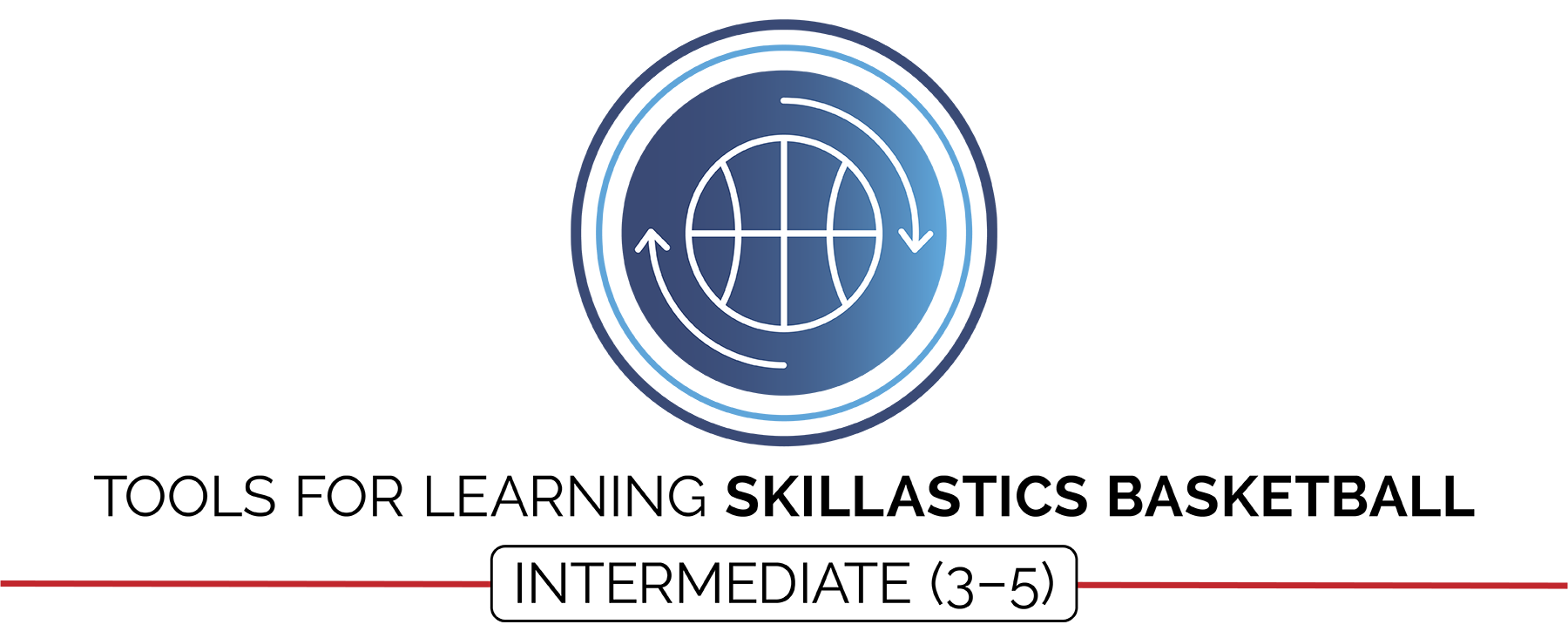Created by: Sandy Slade & Aaron Hart
Special Contributions: Deedi Brown
Design: Jennifer Truong
Skillastics® Basketball is a large group physical activity resource designed to maximize activity and participation for both small and large groups. This module expands your activity options using all of the tools that come with your Skillastics®Basketball game set while also adding all of the rigorous tools found in OPEN curriculum modules.
Module Documents
Complete Module Packet:
Module Overview:
Required Materials:
All Module Activities:
Sample Lesson Plan:
Academic Language Cards:
Letter and Number Cards:
Basketball Word Cards:
Universal Design Adaptations:
Activity Plans
Mirror Mirror on the Court:
Basketball Know How:
Basketball Roundabout:
Dribble Round Up:
Passing Frenzy:
Step Slide Basketball:
Hot Spot, Take a Shot:
Basketball Bonanza:
Assessments
Self-Assessment Worksheet:
Holistic Performance Rubric:
Dual Holistic Performance Rubric:
Academic Language Quiz:
Teacher Evaluation
Teacher Self-Evaluation/Reflection Guide:
Can’t see the file links? Register for FREE today to access all of the modules. SIGN UP HERE
National Standards and Outcomes Focus for the Skillastics® Basketball
Standard 1.Demonstrates competency in a variety of motor skills and movement patterns.
- Standard 1 [E6.3-4]: Performs a sequence of locomotor skills, transitioning from one skill to another smoothly/without hesitation (3); Combines traveling with manipulative skills of dribbling, throwing, catching, and striking in teacher- and/or student-designed small-sided practice tasks (4).
- Standard 1 [E15.4-5]: Throws to a moving partner with reasonable accuracy in a non-dynamic environment (4); Throws with accuracy, both partners moving (5a); Throws with reasonable accuracy in dynamic, small-sided practice tasks (5b).
- Standard 1 [E17.3-5]: Dribbles and travels in general space at slow to moderate jogging speed with control of ball and body (3); Dribbles in self-space with both the preferred and the non-preferred hand using a mature pattern (4a); Dribbles in general space with control of ball and body while increasing and decreasing speed (4b); Combines hand dribbling with other skills during one-on-one practice tasks (5).
- Standard 1 [E20.4-5]: Dribbles with hand/feet in combination with other skills (e.g., passing, receiving, shooting) (4); Hand/foot-dribbles with mature patterns in a variety of small-sided game forms (5).
- Standard 1 [E26.4]: Combines traveling with the manipulative skills of dribbling, throwing, catching, and striking in teacher- and/or student-designed small-sided practice task environments (4).
Standard 2.Applies knowledge of concepts, principles, strategies and tactics related to movement and performance.
- Standard 2 [E1.3-5]: Recognizes the concept of open spaces in a movement context (3); Applies the concept of open spaces to combination skills involving traveling (e.g., dribbling and traveling) (4a); Applies the concept of closing spaces in small-sided practice tasks (4b); Dribbles in general space with changes in direction and speed (4c); Combines spatial concepts with locomotor and non-locomotor movements for small groups in gymnastics, dance, and games environments (5).
- Standard 2 [E2.3-5]: Recognizes locomotor skills specific to a wide variety of physical activities (3); Combines movement concepts with skills in small-sided practice tasks, gymnastics, and dance environments (4); Combines movement concepts with skills in small-sided practice tasks/games environments, gymnastics, and dance with self-direction (5).
Standard 3.Demonstrates the knowledge and skills to achieve and maintain a health-enhancing level of physical activity and fitness.
- Standard 3 [E2.3-5]: Engages in the activities of physical education class without teacher prompting (3); Actively engages in the activities of physical education class, both teacher-directed and independent (4); Actively engages in all the activities of physical education (5).
Standard 4. Exhibits responsible personal and social behavior that respects self and others.
- Standard 4 [E4.3-5]: Works cooperatively with others (3a); Praises others for their success in movement performance (3b); Praises the movement performance of others both more and less-skilled (4a); Accepts “players” of all skill levels into the physical activity (4b); Accepts, recognizes, and actively involves others with both higher and lower skill abilities into physical activities and group projects (5).
- Standard 4 [E5.3-5]: Recognizes the role of rules and etiquette in physical activity with peers (3); Exhibits etiquette and adherence to rules in a variety of physical activities (4); Critiques the etiquette involved in rules of various game activities (5).
- Standard 4 [E6.3-5]: Works independently and safely in physical activity settings (3); Works safely with peers and equipment in physical activity settings (4); Applies safety principles with age-appropriate physical activities (5).
Standard 5. Recognizes the value of physical activity for health, enjoyment, challenge, self-expression, and/or social interaction.
- Standard 5 [E2.3-5]: Discusses the challenge that comes from learning a new physical activity (3); Rates the enjoyment of participating in challenging and mastered physical activities (4); Expresses (via written essay, visual art, creative dance) the enjoyment and/or challenge of participating in a favorite physical activity. (5).

